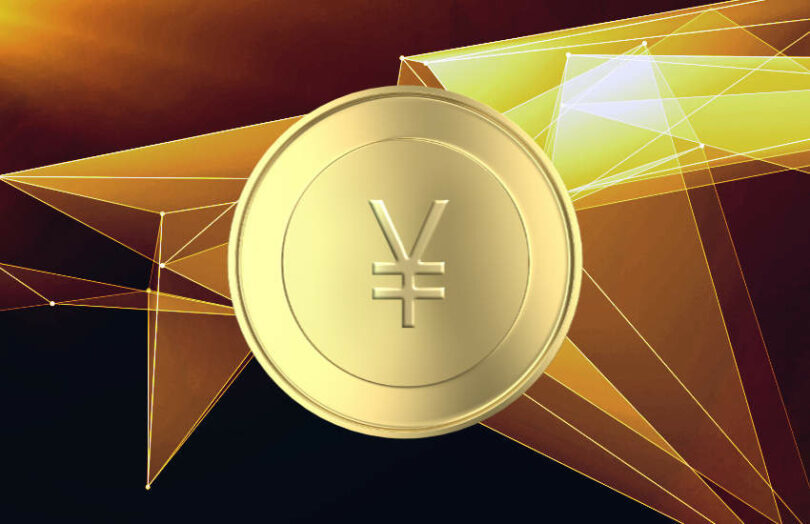ICBC China’s biggest bank and e-commerce giant JD.com have worked together to develop a supply chain finance solution based on digital RMB smart contracts. To date, the emphasis has been on consumer CBDC smart contracts, so this is one of the first business applications.
This raises an interesting question: how does the broader smart contract ecosystem work, given they trigger central bank digital currency (CBDC) payments? And a much bigger question: What does this mean for the future of banking?
JD.com supply chain finance & digital RMB
Earlier this month, JD.com was involved in the first supply chain finance credit that was entirely automated using digital RMB. CBDC aside, supply chain finance solutions often involve a large company working with its bank to supply credit to its suppliers.
In this case, large companies pay the funds directly and instantly to the suppliers using CBDC, avoiding bank settlement delays. Combining a CBDC and smart contracts, JD.com highlighted how it’s possible to work directly with multiple financiers without using a third party provider. Later we’ll explore the implications of this.
Meanwhile, smart contracts are pieces of programming code. Given the digital yuan is used only for the payment leg, the majority of the code is around business applications. For example, if someone orders a food delivery and pays upfront with the CBDC, it will lock the currency as a prepayment. But much of the code will involve logging the food order, calculating the amount due, and recording the customer accepting the delivery. Only then is the money released to the restaurant.
How digital yuan smart contracts work
Smart contracts are on a separate system from the CBDC but are used to add payment conditionality and programmability.
In the same way that banks distribute the centralized CBDC in China, they are also used to access smart contracts.
The smart contract platform is surprisingly open. It is a little like an open source version of Apple iOS apps.
Organizations can work with and through the big banks to develop smart contracts based on central bank rules and standards. Then the banks submit the smart contracts to the central platform for review. That’s not dissimilar to submitting iPhone apps to the Apple appstore.
The review isn’t just technical but also looks at the legality of the smart contract. Presumably that might involve the smart contract platform liaising with other regulators. Once the code is approved, it becomes an open source template so others can re-use it.
While approval is centralized, we’re not 100% clear whether the smart contract would run on the bank’s infrastructure or the central banks’. The platform adheres to the principle of “centralized management and two-tier operation structure,” which might imply that smart contracts are executed on the infrastructure of the big state banks.
Given the banks already implement a layer of security around CBDC transactions, there’s some logic in them hosting the smart contracts.
A year ago, Mu Changchun, the head of the central bank’s Digital Currency Research Institute, outlined the framework for smart contracts. He mentioned that code development needs to be both secure and convenient. And it should take advantage of the expertise of different agencies and institutions.
He also emphasized the importance of interoperability. This includes interoperability of smart contract systems and external systems, particularly for identity and compliance.
Meanwhile, to use the smart contract, businesses interact via an API.
Is digital RMB programmable money?
The central banks of the EU and England have rejected the idea of programmable money. That means that units of money can only be used to buy specific types of goods or services. In contrast, programmable payments define the business logic for payments.
At its core, we don’t believe the digital RMB is programmable money. However, in conjunction with smart contracts, it looks similar.
ICBC revealed that most of China’s digital RMB ‘red envelope’ giveaways are based on programmable smart contracts. In some cases, the goal was to promote the adoption of the CBDC, but others related to COVID. Often recipients could only spend the red envelope CBDC at certain merchants, and the smart contracts would impose that restriction. Also the red envelopes had expiry dates, so smart contracts reclaim unused currency at the end of the validity period.
Analysis: how CBDC smart contracts impact commercial bank money
In the UK, Barclays recently wrote a paper about the functional consistency of money and the potential digital pound. One of the takeaways was that bank deposit tokens and CBDC might want to share the same (centralized) programmability layer. That helps with full interoperability.
But the key point Barclays was making is that to preserve the singleness of money, different types of money need to have the same functionality. That ranges from the ability to withdraw cash at an ATM to programmability.
In China’s case, to what extent can banks integrate their own payments with the digital RMB smart contract platform? Or is that functionality restricted to the CBDC?
For years, ICBC has already used smart contracts with bank payments. And it recently integrated its existing blockchain with the digital RMB smart contract platform.
However, smart contracts could still put commercial bank money at a disadvantage. That’s because someone can’t necessarily use RMB smart contracts for a payment from any commercial bank. If they could, that might level the playing field between big and small banks.
Analysis: Does CBDC commoditize banking services?
A second point relates to open source. From a societal perspective, open source is enormously beneficial because innovation is accelerated as people build on each other’s innovations.
In China, with two dominant financial players Tencent/WeChat Pay and Ant/Alipay, an explosion of code sharing could start to level the playing field. On the other hand, when many services become commoditized, it can benefit those with brands and scale.
How will banks in the West respond to a concept like this? There’s no question that many activities are replicated across every bank with no competitive advantage. For these functions, open source makes sense. However, most have existing legacy systems which they might be slow to upgrade. So the primary beneficiaries might be new entrants.
And if higher value activities became open source and automated, it could impact competitive advantage.
Finally, the supply chain example appears to demonstrate the potential for a CBDC to disintermediate banks – not just for payments but for other functionality. Often a single bank is the primary conduit for supply chain finance, but in the digital RMB, there are competing financiers. That said, many trade finance platforms already enable multiple lenders to compete on a single platform. Here, it is those platforms that become disintermediated.
A path to narrow banking?
Zooming out to a distant future, one possibility is banks competing for lending opportunities on centralized smart contract platforms – not just for trade finance but for all lending. This looks similar to the vision of narrow banking proponents who see lending as the commercial bank’s primary (sole) role.
It has all sorts of implications for commercial banks and existing platforms for trade finance or other banking services.
Most of all, it raises major questions about the breadth of the role of the central bank.
The Dinarian On Locals is a labor of love that I pour my heart and soul into during my personal time. Countless hours are dedicated to delivering you the most up-to-date, unfiltered, and authentic news and information. Your support means the world to me, and I invite you to consider making a donation or becoming a dedicated supporter of this project. Any amount of XRP donations can be sent to XRP address: rqEy1PDACRg3p9RaVEZz6jU1g9RgguP91 or by scanning the QR code below and are not only appreciated but needed...
To those of you already backing my efforts, I extend my deepest gratitude. Your generosity fuels this mission, and I genuinely thank you from the depths of my heart. Together, we can continue to bring you the best results and make a significant impact in everyones future! ~D





























